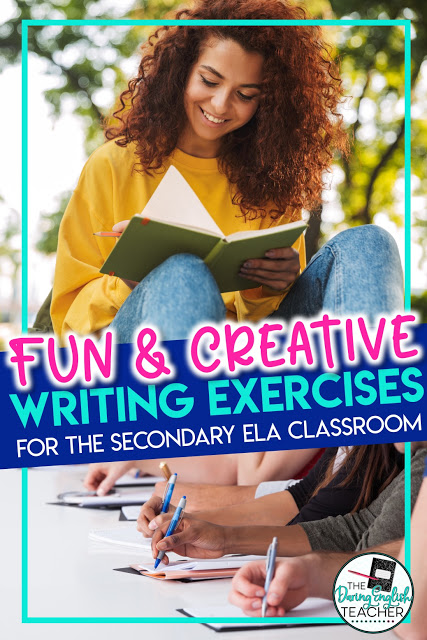Creative writing is a skill that can be expanded and applied to many other areas of the secondary ELA curriculum, like analyzing text or creating out-of-the-box arguments. The best exercises are those that are engaging and stick with students for the rest of their learning experiences. Teaching creative writing in the classroom can oftentimes feel like a daunting task, so it is important to incorporate fun and engaging writing activities into the classroom. Making writing fun and memorable is easy with these five creative exercises:
The 5 Senses:
The five senses are an essential part of any descriptive writing. Take your students outside or to an area with high foot traffic. Instruct them to choose a person or object to write about, using all five senses. Allow them to read their short descriptions out loud to one another and to take note of which senses their peers used.
One resource to help your students learn how to write more descriptively is my Descriptive Writing Teaching Unit. I also offer this teaching unit in a digital format.
Mix ‘n Match:
Creativity can sometimes be hard to come by, but with a compelling visual prompt, it can also be easy to jumpstart. Run a quick Google search of exciting photography, and focus on finding specific and unique locations and people. Print off the same amount of both setting and character. Spread these pictures out among students, allowing each to mix and match the options to write a short story, creating their own unique mix of settings and characters. To save ink, you can also do the same with newspaper and magazine clippings.
Pen to Paper:
Sometimes, developing a skill is simply practicing without giving up. Writer’s block should not be an excuse. To break writer’s block in students, provide a list of words, prompts, or starting dialogue. Oftentimes, students will have an idea about what they want to write, but they will just need a little of help getting started.
For example: “lost,” “a sticky situation,” or “‘Why would you do that?'” Have your students choose one or several of the prompts. Students then put pen (or pencil) to paper and write whatever comes to mind for five minutes without stopping.
Trade-off:
Understanding plot structure is an essential tool for every ELA student, but, at times, it can be challenging to differentiate the various parts of a plot. This exercise should have students see the plot unfold for themselves. Split several pieces of paper into five parts with lines, and label each section to correspond with a part of a plot (exposition, rising action, climax, falling action, resolution). Split students into groups of five and give each group five minutes to write the exposition. The students then rotate papers and have one minute to read the exposition and five minutes to write the next part of their new story. They should continue the rotation until all of the stories are complete.
Emotional Acre:
Every character has a goal, and in addition to that goal, each character tends to their own “emotional acre.” A character’s “emotional acre” houses all of their quirks, pet peeves, and interests. Have students create a character by establishing a specific goal that their character has. Then, hand out squares of paper, colored pencils, or crayons and instruct students to draw their character’s “emotional acre.” To prompt them, ask questions such as, “What is this character’s most prized possession?” “What would you find in their pockets or purse?” “What do they like to do after school or work?” “Do they have a pet? How do they feel about animals?”
These simple exercises expand both your students’ writing ability and knowledge for more involved reading. They will help your students think outside the box!
If you’ve enjoyed these writing exercises, be sure to check out More Creative Writing Ideas!




